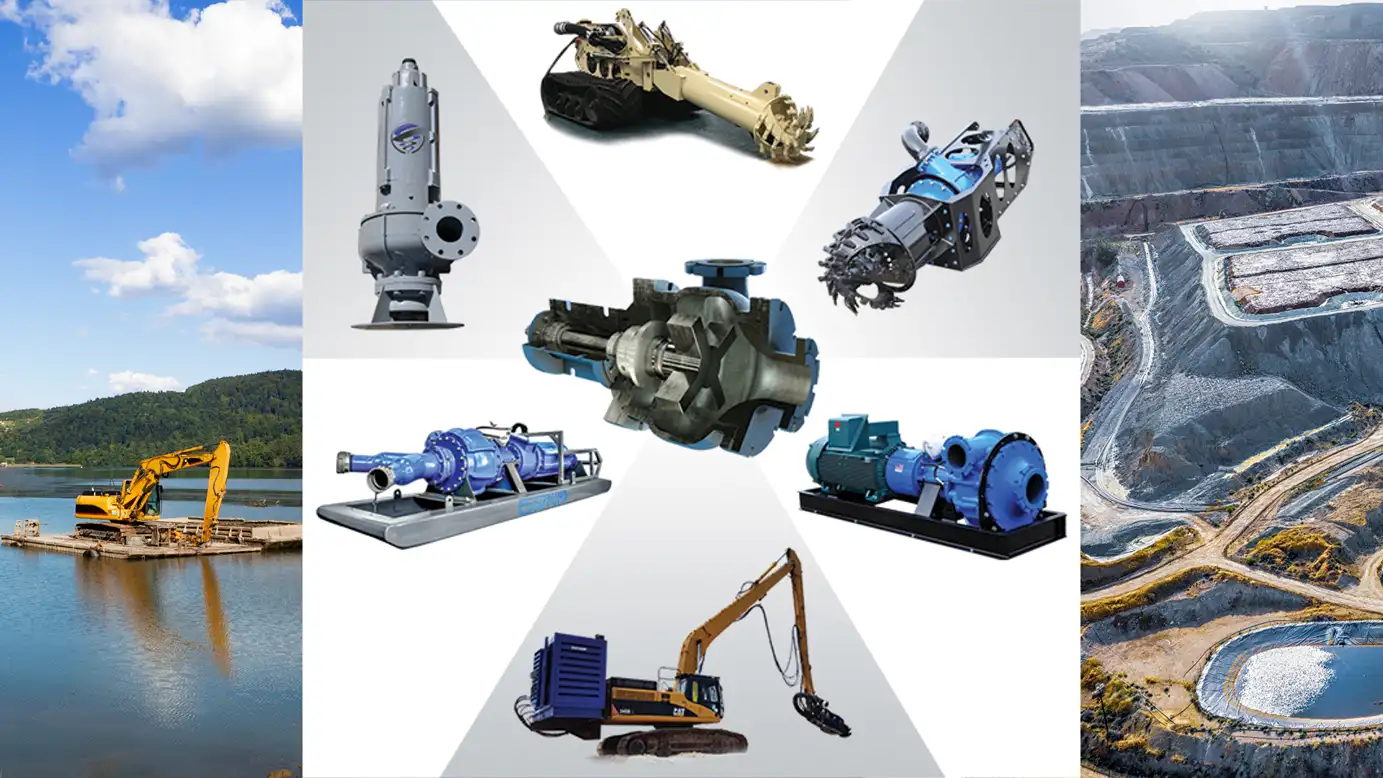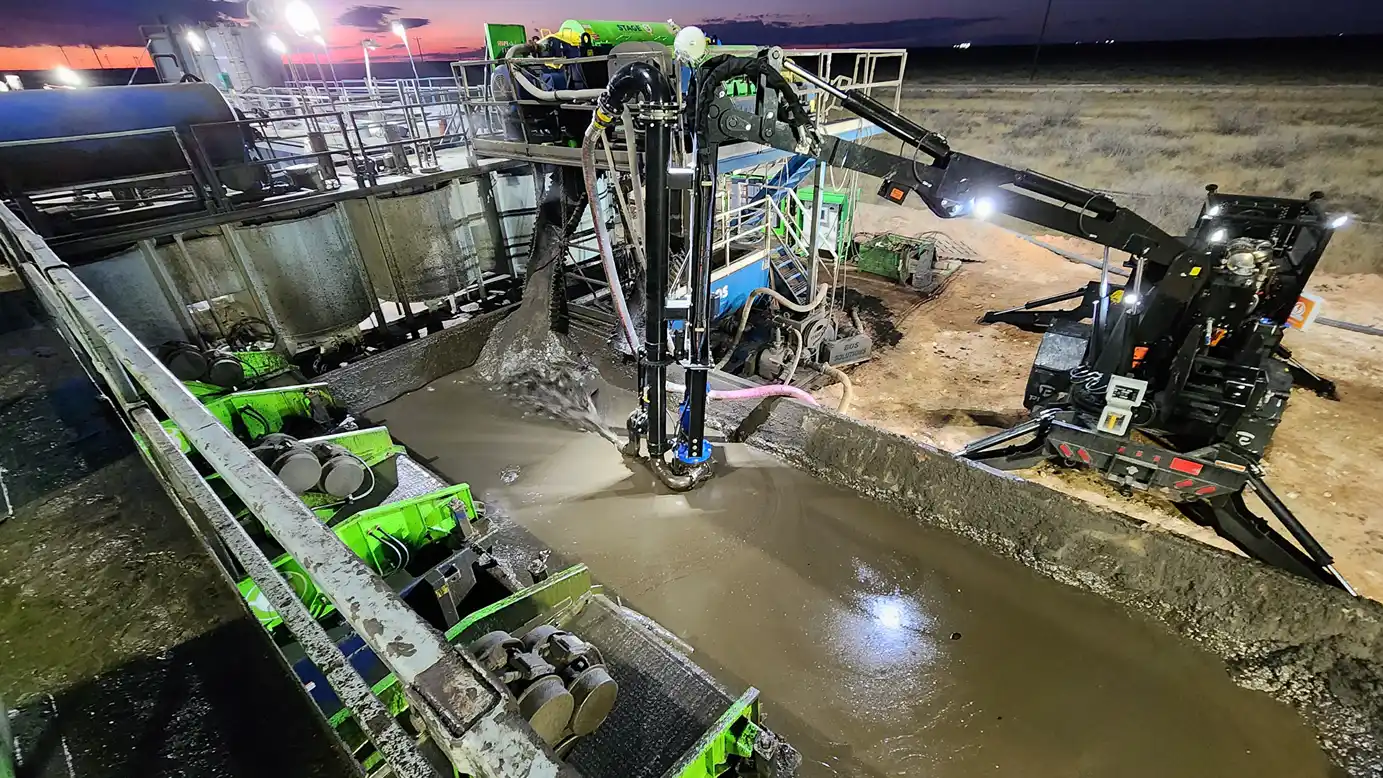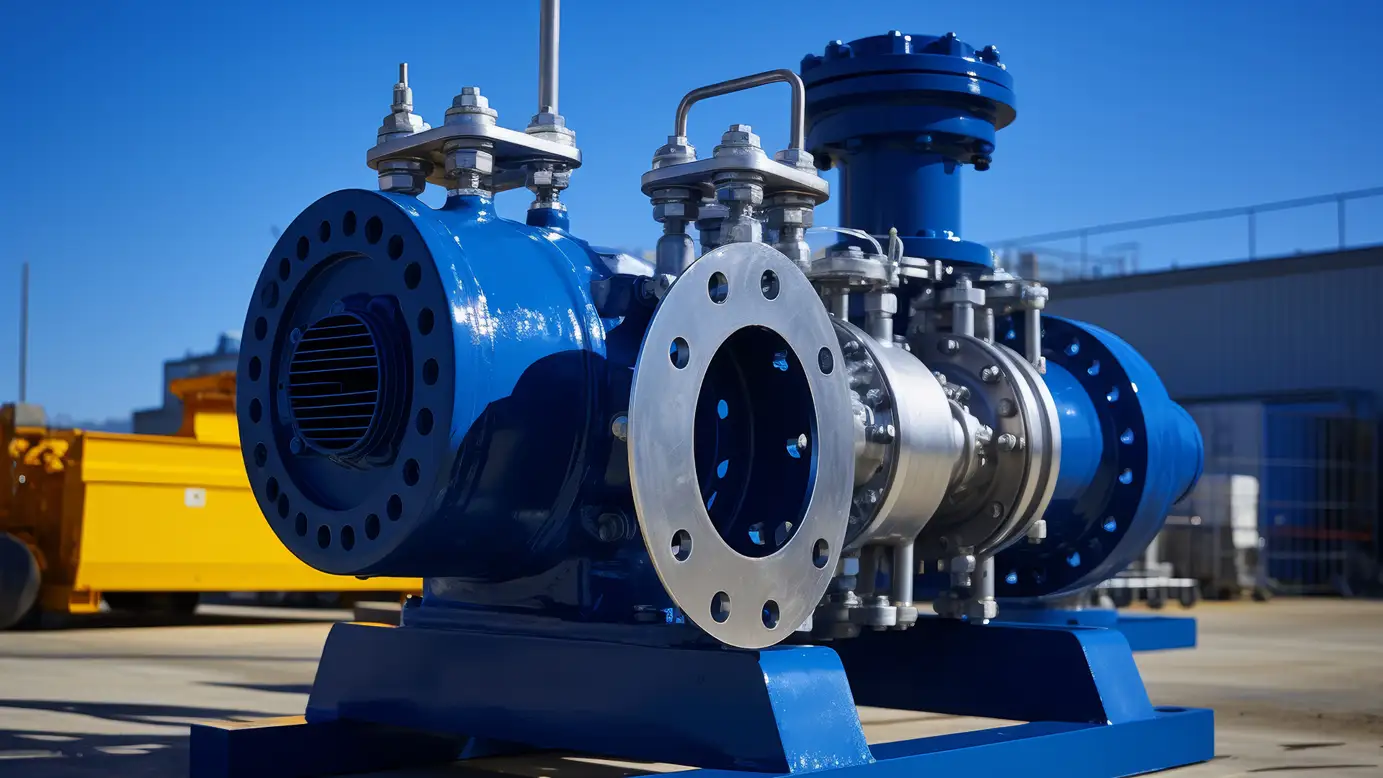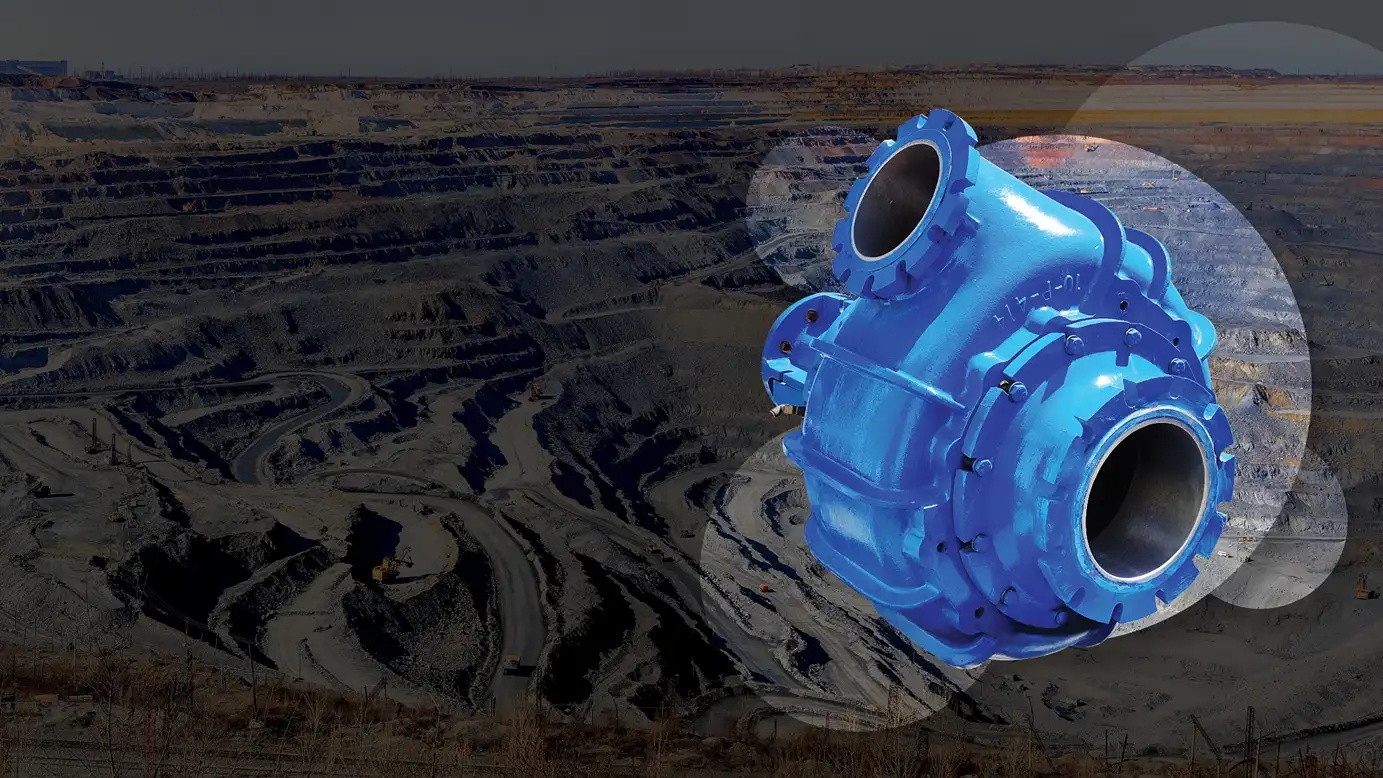
Industrial pumps are fundamental to efficient operations in various business sectors, including agriculture, manufacturing, mining, and municipal services. These versatile machines effectively manage fluids across diverse applications, boosting productivity and safety. Meanwhile, industrial sump pumps are essential for controlling water in basements, pits, and other areas prone to flooding, as well as protecting facilities from water damage and operational disruptions.
API process pumps meet all API 610 requirements, ensuring safety and reliability for high-pressure, high-temperature hydrocarbon applications.
Equally important are industrial water pumps, which are crucial for the transportation and distribution of water in contexts ranging from farming irrigation systems to urban water treatment facilities. This guide comprehensively explores industrial pump types, applications, and essential considerations, helping you navigate this complex landscape to find solutions that best meet your operational needs.
Understanding Industrial Pumps:
Industrial pumps are critical devices used across various industries to move fluids by transforming electrical energy into hydraulic energy. These devices are crucial in numerous applications, from agriculture to chemical processing, ensuring efficient and reliable fluid management. Industrial water pumps, a subset of industrial pumps, are specifically designed to handle water, which is crucial for irrigation, municipal water supply, and industrial cooling systems.
Classification of Industrial Pumps
Industrial pumps can be broadly categorized based on their operational principles into three main types:
Centrifugal Pumps:
Centrifugal pumps are the most prevalent kind of industrial pump. Centrifugal pumps utilize a rotating impeller that accelerates the fluid outward from the center of the pump to the exit or discharge pipe, leveraging centrifugal force. This action increases the pressure and flow rate of the liquid. Due to their efficient handling of low-viscosity fluids and high flow rates, centrifugal pumps are commonly used in water treatment, building services, and irrigation systems. Choosing a centrifugal pump (such as self priming or end suction pumps) can be often quite simple, as they are generally quite popular among ansi pumps.
Positive Displacement Pumps:
This kind of industrial pump operates on the principle of capturing a specific amount of fluid and displacing it into a discharge pipe. This group includes gear pumps, piston pumps, diaphragm pumps, and screw pumps. Positive displacement pumps are suitable for high-pressure applications and handling viscous fluids or fluids containing solids. Progressive cavity pumps, a type of positive displacement pump, are specialized solutions for handling challenging liquids that other pumps cannot accommodate. Industries such as oil and gas, food processing, and wastewater treatment often rely on these pump products to accurately dose and handle complex fluids.
Specialty Pumps:
This category encompasses pumps designed for specific needs that need to be adequately addressed by centrifugal or positive displacement pumps. Specialty pumps include:
-
Peristaltic Pumps: These are used in medical and laboratory settings to pump sterile fluids.
-
Diaphragm Pumps: Often used for hazardous chemicals as they offer high containment levels.
-
Metering Pumps: Designed for precision in dosing chemicals in treatment processes.
Each type of industrial pump has been engineered to meet distinct operational demands, offering solutions tailored to the challenges of various fluid management tasks. For example, peristaltic pumps are preferred when contamination must be avoided, such as in the pharmaceutical industry.
In contrast, diaphragm pumps are chosen for their robustness in handling corrosive or hazardous substances.
Selecting the right industrial pump involves understanding the application’s requirements, including fluid characteristics, required flow rate, and the system’s pressure demands. Factors such as the chemical compatibility of pump materials with the fluids being processed, the efficiency of the pump operation, and maintenance needs also play crucial roles in the selection process.
The wide range of industrial pumps available today offers businesses the tools they need to manage fluids effectively in diverse environments. For simple water transport or complex chemical processing, understanding these pumps’ types, functionalities, and specific applications is essential for optimizing operations and achieving long-term reliability and efficiency.
Types of Industrial Pumps:
Centrifugal Pumps: Overview and Mechanics
Centrifugal pumps are industrial pumps that move fluid by transferring rotational energy from one or more driven rotors, called impellers. The fluid enters the pump impeller along its axis. It is pushed outward by the impeller’s spinning action, gaining speed and pressure through kinetic energy transfer from the rotation.
Subtypes of Centrifugal Pumps
-
Single-Stage: Consists of one impeller and is typically used for low-pressure, high-flow applications.
-
Multi-Stage: Contains two or more impellers for generating higher pressures, suitable for applications requiring high lifts or significant pressure boosts.
-
Axial Flow: Axial flow pumps feature impellers that push fluid in a direction parallel to the impeller shaft, making them ideal for achieving very high flow rates with very low head, suitable for specific industrial applications requiring these characteristics.
-
Mixed Flow: Combines axial and radial flow features, where the fluid experiences radial movement and lift, compromising flow rate and pressure.
Applications
Centrifugal pumps are versatile and used across various industries:
-
Water Treatment Plants: These are used to move large volumes of water through filtration and chemical treatment systems.
-
Chemical Processing: To circulate chemicals in manufacturing processes, ensuring consistent supply and pressure. They are also capable of transferring chemicals such as volatile solvents and corrosive chemicals.
-
Oil Refineries: For circulating crude oil through various stages of processing.
Benefits
-
They can handle very high flow rates, making them suitable for large-scale industrial applications.
-
They are generally easier to maintain due to their simple mechanism and fewer moving parts.
Drawbacks
-
These pumps are not ideal for fluids with high viscosity as their efficiency significantly drops with thicker fluids.
-
Performance can be limited when handling fluids that require precise volumetric flow control.
Displacement Pumps: Overview and Functionality
Displacement pumps are a category of industrial pumps that operate on the displacement principle. They move a set volume of fluid with each cycle through the mechanical contraction and expansion of a diaphragm or chamber. Unlike centrifugal pumps, displacement pumps can maintain a consistent flow rate regardless of the pressure.
Subtypes of Displacement Pumps
Reciprocating: Uses pistons, plungers, or diaphragms to push fluid linearly.
Rotary: Employs gears, screws, or lobes that rotate to move the fluid.
-
Magnetic drive pumps: These pumps are notable for their absence of mechanical seals and leak-free design, making them ideal for various industrial applications.
Peristaltic: Consists of a flexible tube compressed by rollers, pushing the fluid through the pump.
Applications
-
Food and Beverage: This is used to handle viscous products like syrups and creams without contamination.
-
Pharmaceuticals: To accurately dose and handle sensitive liquids under sterile conditions.
-
Construction: For transferring concrete and other thick materials.
Benefits
-
Excellent for generating high pressures and handling viscous fluids efficiently.
-
These pumps provide a consistent and accurate flow for dosing and precision applications.
Drawbacks
-
Susceptible to wear and damage when handling fluids with solids.
-
Often produce a pulsating flow, which can be less smooth and steady than centrifugal pumps.
Specialty Pumps: Description and Distinctive Features
Specialty pumps are designed for specific, challenging industrial applications that require handling complex fluids or precise fluid control. They often feature robust designs and specialized materials to effectively manage abrasive, corrosive, or delicate fluids.
Subtypes of Specialty Pumps: Vertical Turbine Pumps
-
Diaphragm Pumps: These utilize a flexible diaphragm that moves back and forth to create a variable-volume chamber for pumping fluids.
-
Gear Pumps: Use gear meshing to pump fluid by displacement, ideal for continuous, pulse-free delivery.
-
Screw Pumps: Feature one or several screws that act as rotors to move fluid along the screw axis in a smooth, continuous flow.
-
Eddy Pumps: These are industrial slurry pumps that are non-clog pumps designed for high solids industrial pumping applications.
-
Gorman-Rupp Pumps: Known for their longevity, reliability, and effectiveness in handling corrosive and abrasive industrial wastes, as well as pumping solids and debris in hostile industrial environments.
Applications
-
Mining: Specialty pumps handle abrasive slurries and chemicals during mining.
-
Agriculture: These pumps facilitate irrigation and pesticide/fertilizer application by handling various fluid types efficiently.
-
Wastewater Treatment: Employed for pumping chemical additives, sludge, or other viscous materials.
Benefits
-
Capable of handling abrasive and corrosive fluids without damage.
-
Provide precise metering capabilities for accurate fluid management.
Drawbacks
-
-
Typically, they have a higher initial cost due to their specialized design and materials.
-
Maintenance can be complex, requiring skilled technicians and specific spare parts.
-
Industrial Sump Pumps: Overview and Functionality:
Definition and Role in Industrial Settings
Industrial sump pumps are designed to remove unwanted water from areas where it accumulates, typically in sump pits. They play a critical role in industrial settings by preventing water-related damage and facility disruptions.
Submersible Pumps vs. Pedestal Sump Pumps
Submersible Sump Pumps: These are installed entirely underwater in the sump pit. They are quieter and typically have a higher capacity for water removal.
Pedestal Sump Pumps: Mounted above the sump pit, pedestal pumps have the motor out of the water, making them easier to maintain and repair. However, they are generally less powerful than submersible types.
Applications
-
Basement Flooding Prevention: Protects facilities with basements from water damage due to flooding.
-
Mining Operations: Manages water in mines to prevent flooding and ensure the safety of mining activities.
-
Industrial Wastewater Management: Helps efficiently handle and remove wastewater generated during industrial processes.
Benefits
-
Effective in removing water quickly to prevent flooding and damage.
-
Space-saving designs, especially submersible pumps, reduce the footprint in industrial environments.
Drawbacks
-
Maintenance can be challenging due to the submerged environments, especially for submersible pumps requiring more effort to access and service.
-
Industrial sump pumps are indispensable in managing water in challenging industrial environments. They offer robust solutions for maintaining dry and safe operational areas.
Industrial Water Pumps: Essential Tools Across Industries:
Industrial water pumps are crucial for a wide range of sectors. They facilitate the movement and management of water essential for agriculture, manufacturing, and municipal services operations.
Subtypes
-
Centrifugal Pumps: These are commonly used for their versatility and efficiency in moving water.
-
Submersible Pumps: Ideal for pumping water from deep sources like wells and sumps.
-
Turbine Pumps are best suited for high-pressure applications, such as municipal water supply systems.
-
Vertical Turbine Pumps: The best choice for deep wells due to their efficiency and reliability.
-
Applications
-
Agriculture: For irrigation and livestock management.
-
Power Generation: Essential for cooling and processing water applications.
-
Municipal Water Supply: Crucial for water treatment and distribution to communities.
Benefits
-
Ensures reliable water transfer and circulation across various applications.
-
They are often designed to be energy-efficient, reducing operational costs.
Drawbacks
-
Susceptible to cavitation, which can cause wear and damage if not properly managed.
-
Initial installation and setup costs can be high, impacting budgets.
Industrial water pumps are foundational in ensuring the efficient and effective management of water resources in diverse industrial landscapes.
Critical Considerations in Pump Selection:
Factors Influencing Pump Choice
-
Fluid Properties: Understanding the liquid type (water, oil, chemical solutions) helps determine the necessary materials and type of pump, whether industrial sump pumps or industrial water pumps.
-
Flow Rate Requirements: Essential for matching the pump capacity with system demands to ensure efficient operation.
-
Environmental Conditions: Conditions such as temperature, pressure, and potential corrosive environments dictate the pump’s robustness and design specifications.
-
Importance of System Design and Compatibility: Ensuring the pump integrates seamlessly with the existing system is crucial for optimal performance. Incompatibility can lead to inefficient operation and increased wear and tear.
-
Choosing the Right Pump Manufacturer: Selecting the right pump manufacturer is vital for ensuring quality and reliability. ITT Goulds Pumps, for example, specializes in industrial pumps and offers unique features tailored to various applications.
Energy Efficiency and Sustainability Considerations
Selecting pumps with high energy efficiency reduces operational costs and contributes to sustainability goals. Modern pumps are designed to provide maximum output with minimal energy input.
Case Studies
Examples from various industries demonstrate successful pump implementations:
-
A chemical manufacturing plant may utilize corrosion-resistant pumps for handling corrosive chemicals such as acidic or alkaline fluids.
-
Agricultural applications highlight using irrigation pumps designed for variable water sources and conditions.
These considerations ensure that the selected pump meets the application’s needs while providing reliable, cost-effective, and sustainable operation.
Future Trends and Innovations in Pump Technology:
Emerging Technologies in Pump Design and Materials
Advances in materials science are leading to the development of more durable and efficient pumps. New composites and polymers offer improved resistance to corrosion and wear, enhancing the longevity of industrial pumps, including industrial sump pumps and industrial water pumps.
Integration of IoT and Predictive Maintenance
Integrating the Internet of Things (IoT) in pump systems allows real-time monitoring and data analysis. This technology enables predictive maintenance, which anticipates potential failures before they occur, minimizing downtime and maintenance costs.
Sustainability Initiatives and Greener Pumping Solutions
There is a growing shift towards sustainability in the pump industry, focusing on energy efficiency and reduced environmental impact. Innovations such as variable speed drives and energy-efficient motors are becoming standard in new industrial pump designs, aligning with global environmental sustainability goals.
Conclusion:
Industrial pumps, pivotal in operations across numerous sectors such as agriculture, manufacturing, and environmental management, demonstrate the critical nature of these systems in ensuring efficiency and reliability in various industries. EDDY Pump, a leader in the field, underscores the importance of choosing the right pump tailored to specific operational demands and environmental conditions. This precision in selection is vital to optimizing performance and extending equipment longevity. Looking forward, EDDY Pump is poised to continue driving innovations in the industrial pumping sector, focusing on efficiency, sustainability, and integrating advanced technologies. The future promises more intelligent, robust, and environmentally friendly pumping solutions, guiding industries toward more innovative operations and greater productivity.




